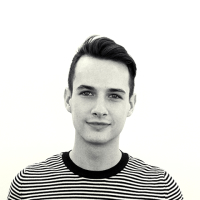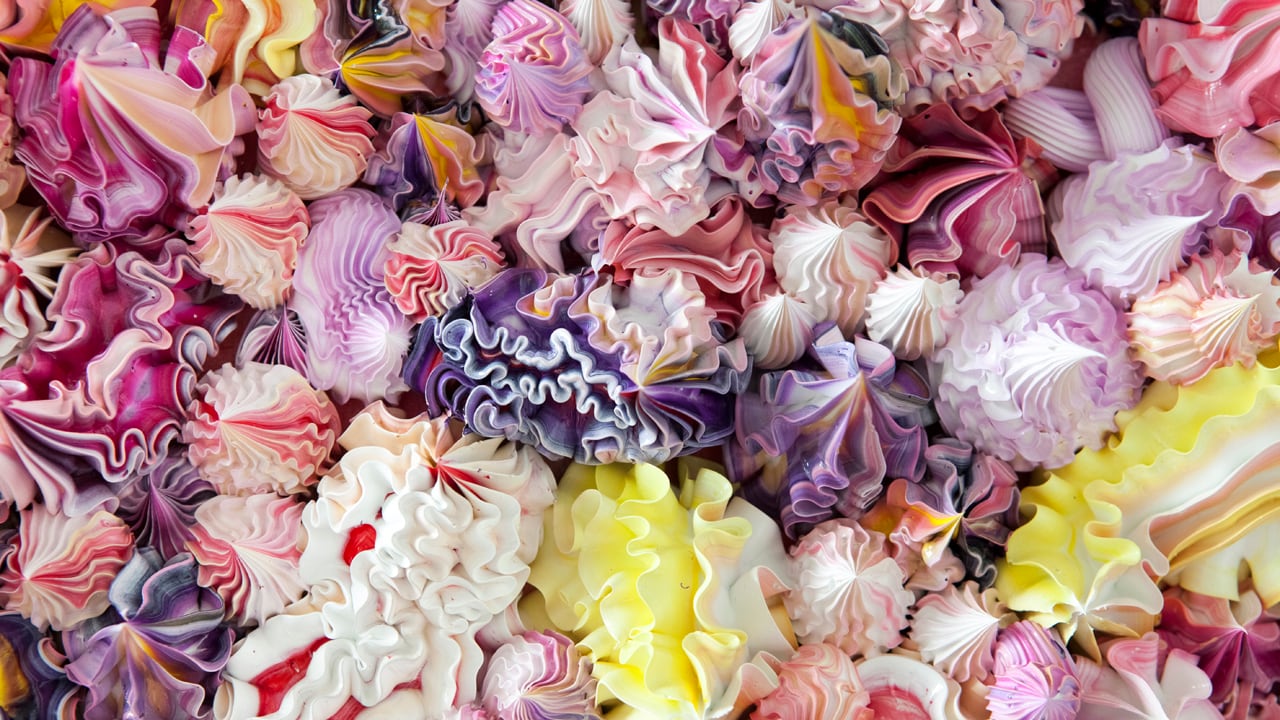
Get ready for some art, because the Armory Show is back in New York City starting on Thursday. With deep roots in history, the fair is not only an homage to the original 1913 Armory Show exhibition that introduced modern art to New York, but it also is a reflection of the show’s founding principle to introduce new talent alongside the many established greats. Founded in 1994, the annual exhibition continues to be the largest art fair in the United States and draws art collectors and admirers from all over the world for a weekend-long, citywide celebration.
Combing talent from all across the globe, this year’s exhibition will give spectators a look at some rarely seen works by prominent historical artists as well as feature the great works being produced by contemporary artists today. We’ve rounded up the top ten works to see during the four-day affair.
Monika Grzymala, “Studio Berlin 2013,” 2013:
ADVERTISEMENT

Polish-born artist Monika Krzymala’s works live in a haunting balance of sculpture and drawing. Her explosive drawings are anything but traditional. For starters, they aren’t confined to a single surface. Instead, they use the special void between walls, floors, and ceilings to create an invisible canvas. She uses various forms of tape to create three-dimensional drawings. Each work is a site-specific response to the space that it occupies, proving that neither sculpture nor drawings are confined to their respective materials.
Jonathan Meese, “DER NULLKONIG MIT DEM SCHNALZMUND (BARTIUSSUS),” 2013:
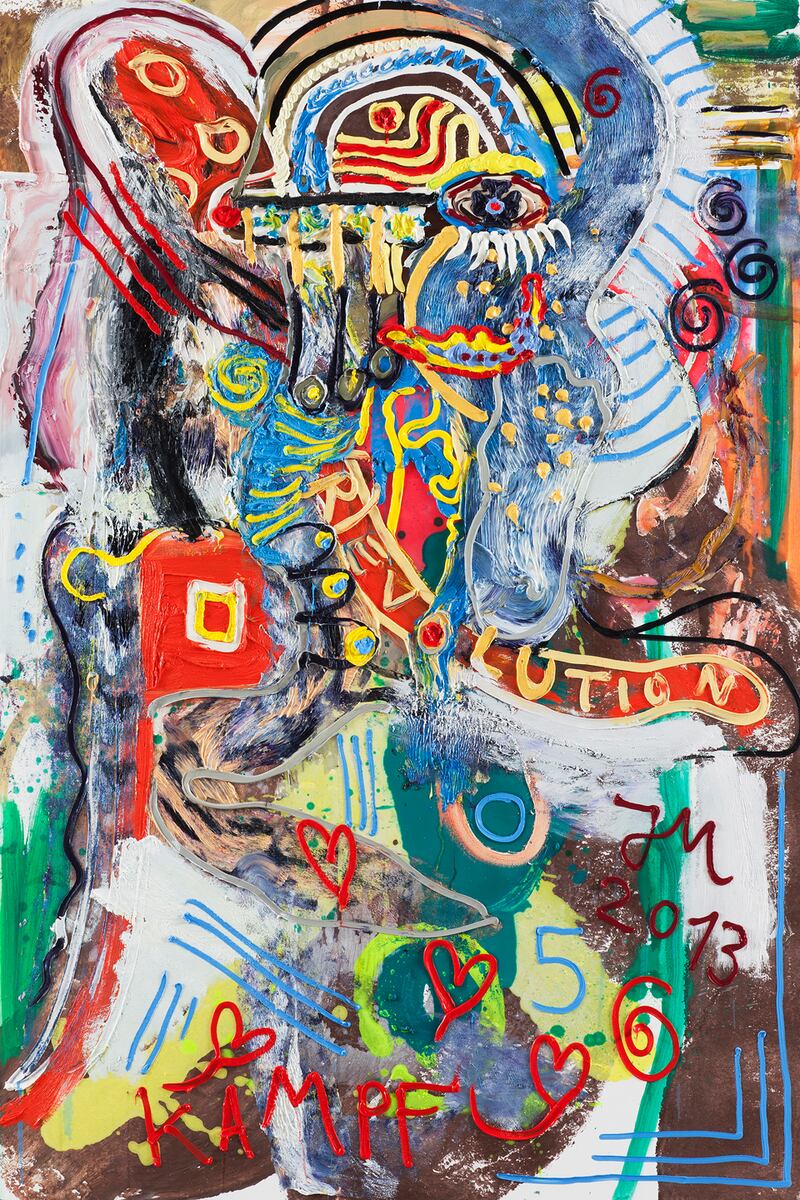
Jonathan Meese uses a combination of unorthodox materials to create highly textural themes of revolution and the failures of ideology in a feverish way, often pulling inspiration from the history of Germany’s war identity. The German-based artist has produced works for the past two decades across a wide range of mediums including installation, performance, sculpture, and painting.
Alexander Calder, “Men,” 1971:

As one of the United States’ most famous sculpture artists from the 20th century, artist and inventor Alexander Calder is responsible for the introduction of the mobile, a sculpture of perfectly balanced objects. Working across all mediums, including sculpture, theater, painting, jewelry, and tapestry, Calder’s “Men” are as balanced and minimalistic as his monumental sculptures.
Aiko Hachisuka, “Sugar Mates,” 2013
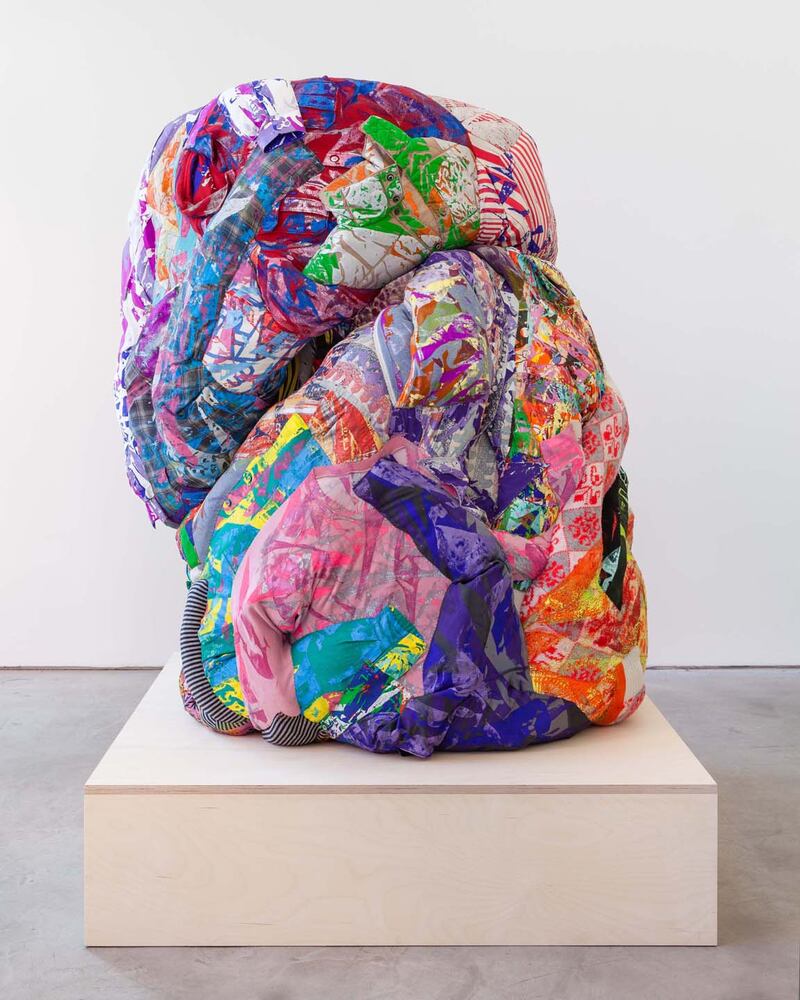
Japanese-born artist Aiko Hachisuka is known for turning second-hand clothing into anthropomorphized abstractions of the human body. For her “Sugar Mates” series, the L.A.-based Hachisuka stuffed, painted, and stitched together the various fashion pieces to create giant, playful abstractions that nod to the industrialist sculptures of John Chamberlain.
Roy Lichtenstein, “Moonscape,” 1965
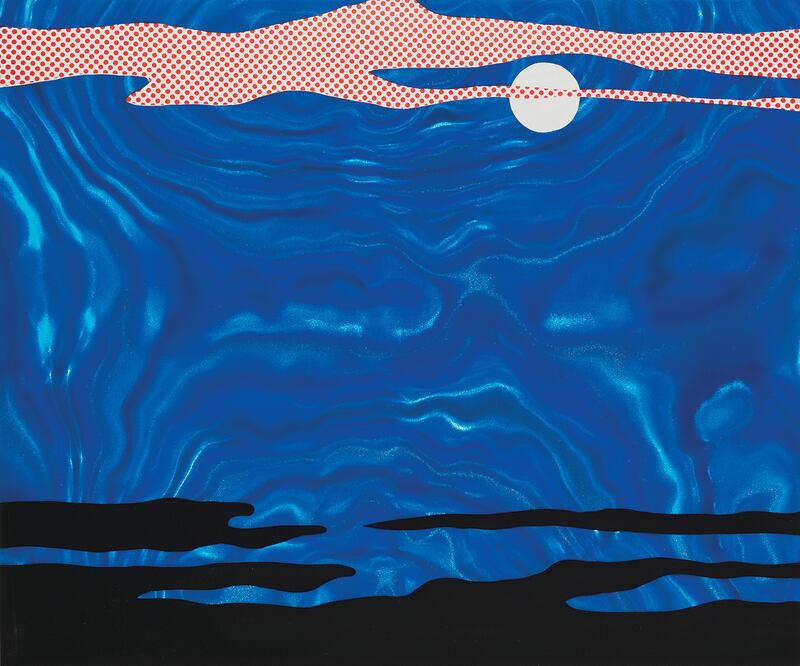
Widely known for his cheeky, oversized, comic strip silkscreens, Roy Lichtenstein is one of the most well known artists from the Pop art movement in the 60s that also included Andy Warhol and Jasper Johns. But his dot laden canvases of damsels in distress aren’t the only works that Lichtenstein created. “Moonscape” uses paint and film to create a lunar scene that is reflective in light and texture, pushing the limits of the two-dimensional work.
Michelangelo Pistoletto, “Venere con Pipa” 1972
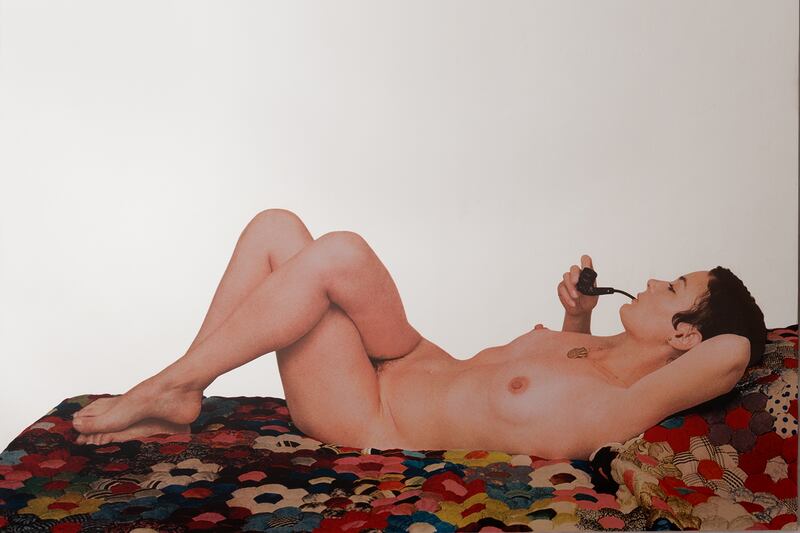
Italian painter Michelangelo Pistoletto is best known for his mirror paintings that serve as the foundation of his oeuvre. Pistoletto uses life-size mirrors as a base on which he adds painted figures or photographic prints. Through this, an active role is given to the spectator, who has inadvertently become an intrinsic part of the artwork.
Mark Flood, “Baron’s Bath” 2013
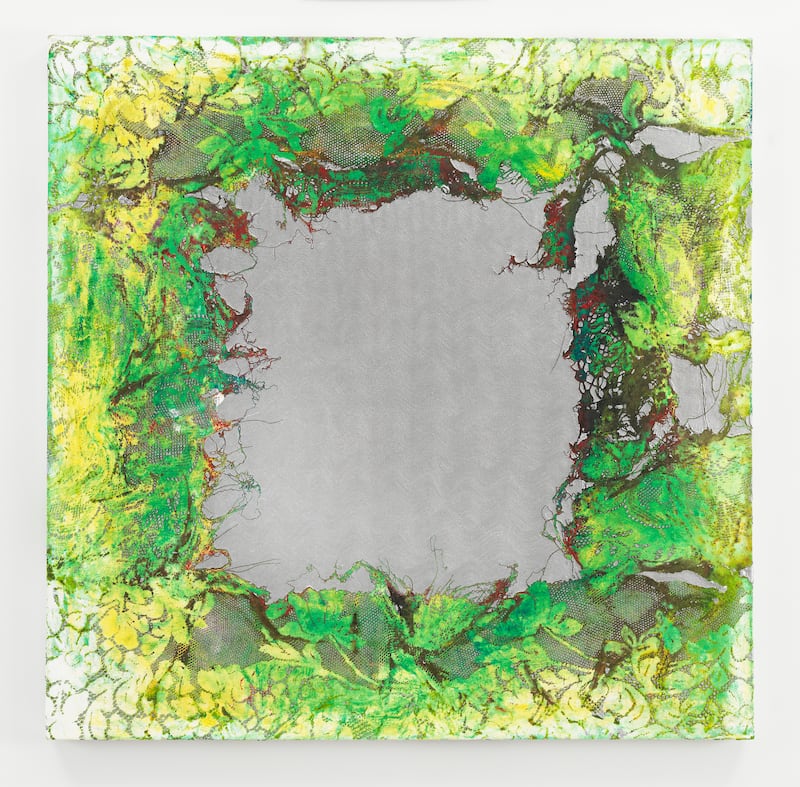
Described as a prankster, Houston, Texas based Mark Flood is part punk-rock musician, part eccentric artist. Creating mostly multi-media works, Flood uses a wide range of toxic colors often dealing with themes of a hate-filled consumerist culture fueled by capitalism.
Mary Heilmann, “Splashy Cut,” 2013
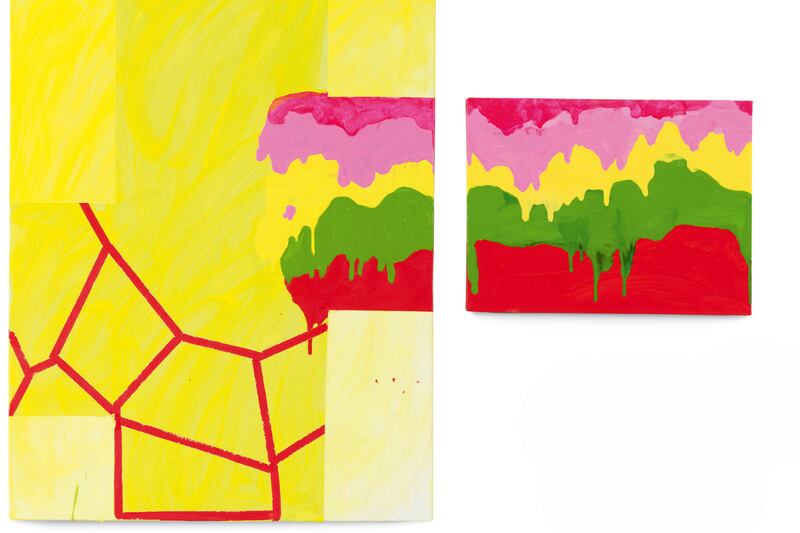
Using geometric forms as a basis for most of her art, American artist Mary Heilmann tends to get very personal with her work—every piece has a back story. Inspired by popular culture, the bright hues and shapes that fill her pieces relay a keen eye for color theory, but in unconventional ways. Her works are often meant to be seen as communal spaces to contemplate and socialize, often accompanied by seating areas.
Julia Dault, “Untitled 30, 12:00-6:00pm, August 24, 2013,” 2013
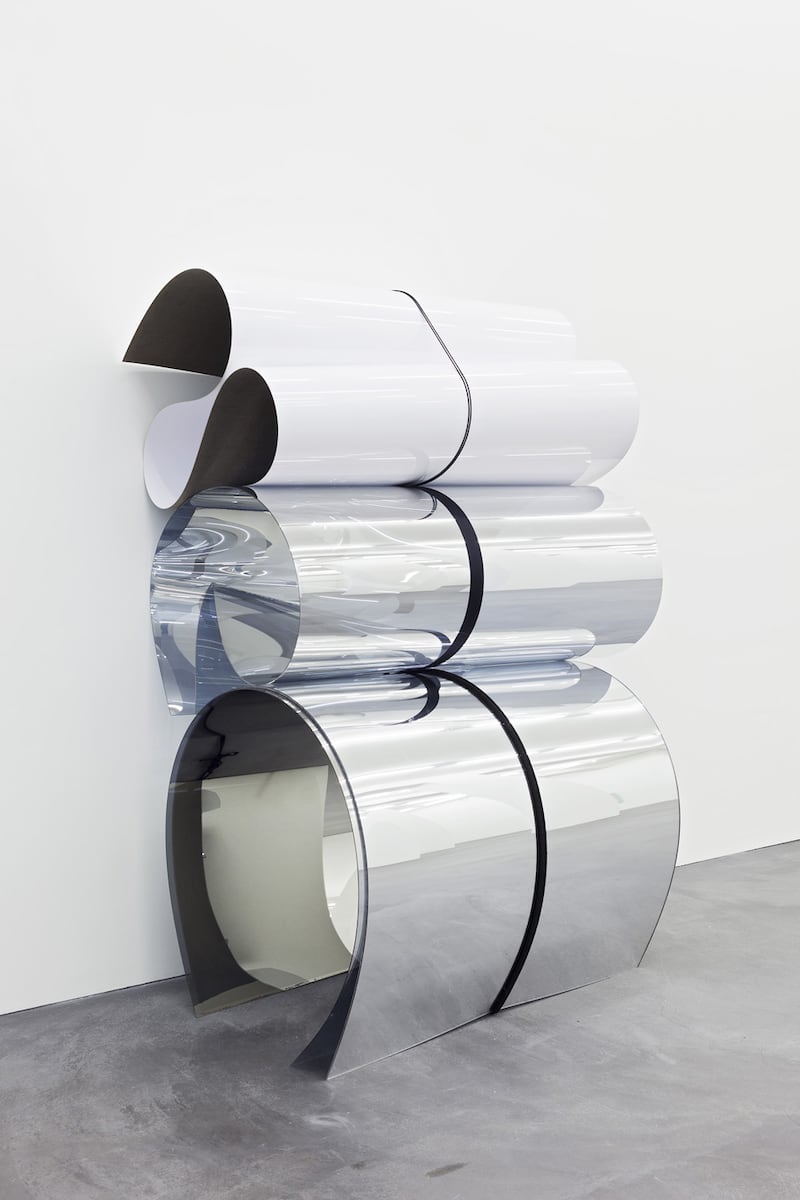
Brooklyn-based artist Julia Dault creates sculptures with a highly industrial aesthetic. Using raw materials, such as Plexiglas and Formica, the harshness of the stiff materials is often negated by the way in which they are presented. Dault perfectly reshapes and balances the industrial sheets using strings and straps, adding an almost organic layer to their typically flat appearance.
Xu Zhen, “Under Heaven 20121020 (detail),” 2012

Beijing-based Xu Zhen has the ability to flawlessly produce works in almost every artistic platform—from photography and video to installations, performances, and paintings—often times incorporating them all into a single work of art. Drawing from sociopolitical themes, Zhen’s use of the emotion of sensitivity creates an ironic, but humorous, look at human exploration.
The Armory Show, located at Twelfth Avenue and 55th Street, will be on display until March 9th and is open from 12pm—7pm daily.
